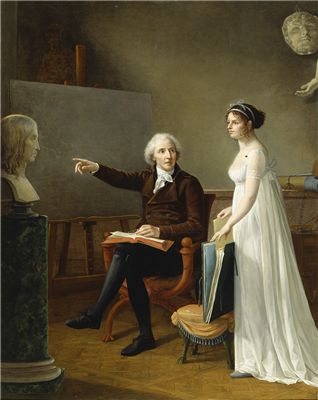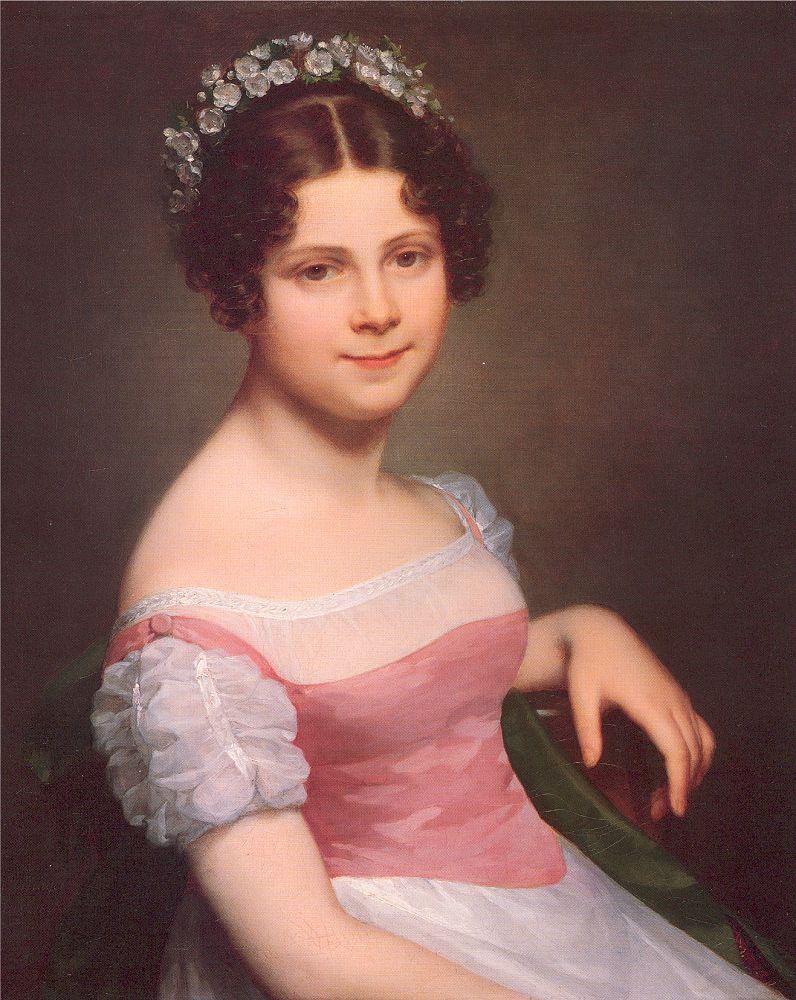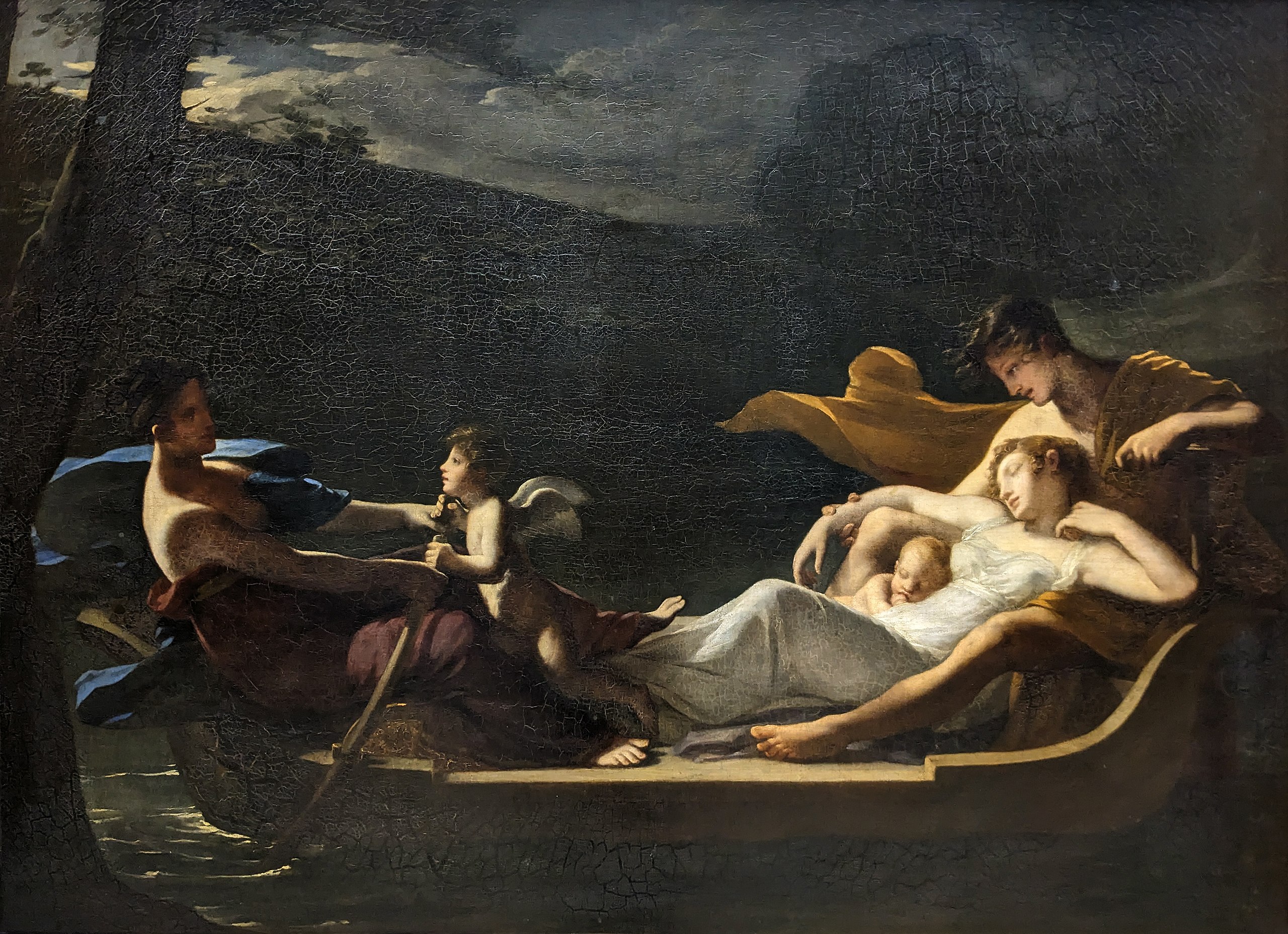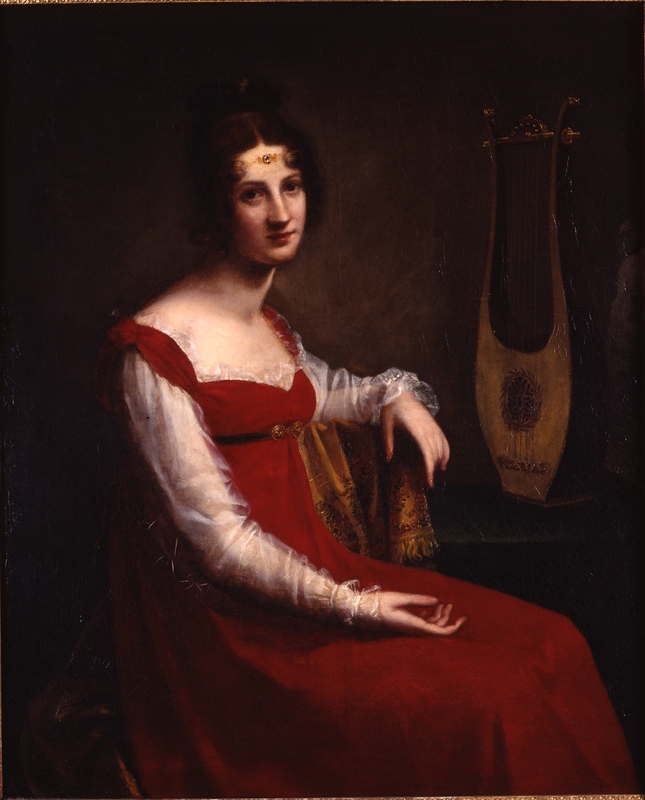Constance Mayer
Active in: France
Alternate names: Marie-Françoise Constance Mayer La Martinière
Biography
Born in Chauny in 1775, Constance Mayer was one of a handful of women artists who became successful in Napoleonic France. The daughter of a customs officer, Mayer had moved to Paris before 1801, where she studied with Joseph-Benoît Suvée (1743–1807) and Jean-Baptiste Greuze (1725–1805). In 1801, she began to work in the studio of Jacques-Louis David (1748–1825) and her Self-Portrait with the Artist’s Father was accepted to the Salon. She was subsequently accepted to exhibit regularly at the Salon. During this earlier period in her career, she specialized in portraits of women and children and domestic genre scenes.
In 1802, she entered the studio of Pierre-Paul Prud’hon (1758–1823), beginning a professional and personal relationship that would shape the remainder of her career. In 1803, Prud’hon was commissioned to paint a portrait of Empress Josephine (1763–1814) and his wife, the mother of his five children, believed that he was in love with the Empress. He had her committed to a mental asylum for the remainder of her life and Mayer took responsibility for the children. Both Prud’hon and Mayer were given apartments in the Sorbonne by Emperor Napoleon (1769–1821), who purchased two of Mayer’s paintings in 1803. Mayer’s paintings became increasingly influenced by Prud’hon and his complex historical and mythological subjects. In 1810, Mayer’s father died, and she began to live with Prud’hon. The two artists worked closely together, with Prud’hon often executing drawings for a composition while Mayer completed the final canvas.
In 1821, changing political fortunes threatened Prud’hon and Mayer’s careers, due to the Bonapartist loyalities. When Prud’hon’s wife died that year, Mayer expected her longtime partner to marry her. When he refused to do so, she died by suicide on May 26. Prud’hon organized an exhibition of her works the following year but never recovered from her death. He died in 1823 and they are buried together in the Père Lachaise cemetery.
Selected Works

Constance Mayer, Self-Portrait with the Artist’s Father, 1801. Oil on canvas, 226 x 179 cm. Wadsworth Atheneum.

Constance Mayer, Portrait of Sophie Fanny Lordon, 1820. Oil on canvas, 60 x 49 cm. Private collection.
Circle
Partner of
Pierre-Paul Prud’hon (1758–1823)
Student of
Joseph-Benoît Suvée (1743–1807)
Student of
Jean-Baptiste Greuze (1725–1805)
Student of
Bibliography
D’Argencourt, Louise. “The Story of a Painting: A Romance in Attribution,” Cleveland Studies in the History of Art vol. 1 (1996): 116–129.
Doin, Jeanne. “Constance Mayer.” La Revue de l’art ancien et moderne 29 (1911): 49-59, 139-50.
Duncan, Carole. “Happy Mothers and other new ideas in French Art,” Art Bulletin vol. 55, no. 5 (December 1973): 570–582.
Gucullett, Charles. Mademoiselle Constance Mayer et Prud’hon. Paris: A. Detaille, 1880.
Guffey, Elizabeth E. Drawing an Elusive Line: The Art of Pierre-Paul Prud'hon. Newark, DE: University of Delaware Press, 2001.
Guffey, Elizabeth E. "Prud'hon, Mayer, and ‘The Dream of Happiness.’" Master Drawings (1996): 390-399.
Guiffrey, Jean. L'oeuvre De P.p. Prud'hon. Paris: A. Colin, 1924.
Pilon, Edmond. Constance Mayer, 1775–1821. Paris: A. Delpeuch, 1927.
Weston, Helen. “The Case for Constance Mayer,” Oxford Art Journal 3, no. 1 ‘Women in Art’ (April 1980): 14–19.


